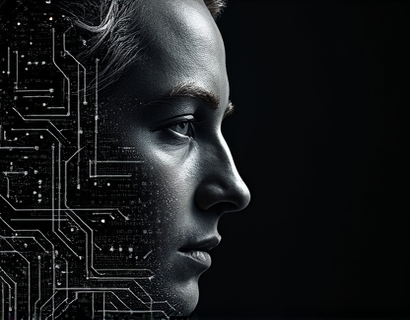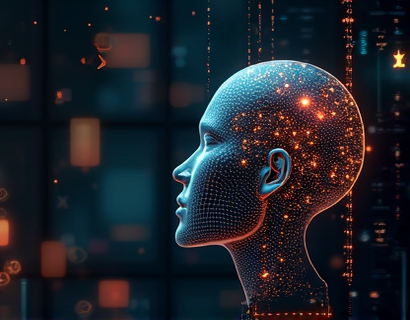Transforming Access to Specialized Architecture Knowledge: The Power of AI-Powered Chat Interfaces
The integration of artificial intelligence (AI) into the realm of architecture has ushered in a new era of knowledge dissemination, making specialized architectural insights accessible to a broader audience than ever before. This transformative journey begins with an AI-powered chat interface, designed to bridge the gap between complex architectural concepts and users of all ages and backgrounds. This article delves into how such interfaces are revolutionizing the way we access and interact with architectural knowledge, emphasizing safety, education, and expert insights.
The Need for Specialized Architecture Knowledge
Architecture is a field rich with intricate details, historical contexts, and technical complexities. For professionals, staying updated with the latest trends, technologies, and regulations is crucial for success. For students, educators, and enthusiasts, gaining a deep understanding of architectural principles and practices is foundational. However, the specialized nature of architecture often creates barriers to entry, making it challenging for many to access reliable and comprehensible information. An AI-powered chat interface addresses these challenges by providing a user-friendly platform that delivers precise and dependable insights.
Enhancing Accessibility and Safety
One of the most significant advantages of AI-powered chat interfaces in architecture is their ability to ensure content safety and accessibility. These platforms are designed with stringent measures to verify the accuracy and reliability of the information provided. This is particularly crucial for educational purposes, where the integrity of the content directly impacts the learning experience. For children and students, the interface is tailored to be child-friendly, ensuring that the information is not only accurate but also presented in an engaging and understandable manner.
Content Verification and Educational Standards
The verification process for content on these platforms involves a rigorous review by experts in the field. This ensures that users, whether they are students, educators, or professionals, receive information that meets high educational standards. The content is regularly updated to reflect the latest developments in the industry, ensuring that users have access to current and relevant knowledge. For educational institutions, this means that teachers and students can rely on the platform for course materials, research, and project inspiration.
Tailored Interactions for Diverse Users
AI-powered chat interfaces are designed to adapt to the needs of different users. For children and students, the interface can simplify complex concepts using visuals, analogies, and interactive elements. For example, a child asking about sustainable architecture might receive a response that includes images of green buildings, explanations of solar panels, and simple definitions of terms like "energy efficiency" and "carbon footprint." For older students and professionals, the interface can delve deeper into technical details, such as structural engineering principles, material science, and regulatory compliance.
Interactive Learning Experiences
The interactive nature of AI chat interfaces enhances the learning experience by allowing users to engage with the material in a dynamic way. Users can ask questions, receive instant feedback, and explore topics in a non-linear fashion. For instance, a student studying historical architecture might start with a question about Gothic cathedrals and, through a series of interactive prompts, discover the evolution of architectural styles, key architects, and significant buildings. This personalized approach not only makes learning more engaging but also helps in retaining information better.
Professional Development and Networking
For professionals in the architecture field, AI-powered chat interfaces offer a valuable tool for continuous learning and professional development. These platforms can provide updates on new building codes, innovative design techniques, and emerging technologies. Architects can use the chat interface to ask specific questions about project challenges, receive recommendations for best practices, and even get insights into case studies and real-world applications. This continuous access to expert knowledge helps professionals stay competitive and informed.
Collaboration and Community Building
Beyond individual learning and professional growth, AI chat interfaces can foster a sense of community among architecture enthusiasts. Users can connect with peers, join discussions, and collaborate on projects. For students, this means having a platform to share ideas, seek feedback, and build networks with like-minded individuals. For professionals, it offers opportunities to collaborate on research, share best practices, and stay connected with industry trends. The community aspect of these platforms enhances the overall value and engagement of the user experience.
Ensuring a Secure Environment
Safety is a paramount concern, especially when it comes to platforms used by children and students. AI-powered chat interfaces implement robust security measures to protect user data and ensure a safe environment. This includes data encryption, strict access controls, and compliance with privacy regulations such as COPPA (Children's Online Privacy Protection Act). Parents and educators can have peace of mind knowing that the platform is secure and that user information is protected.
Parental Controls and Monitoring
To further enhance safety, these platforms often provide parental controls and monitoring tools. Parents can set restrictions on the types of content their children can access, monitor their interactions, and receive notifications about their activity. This level of control helps in guiding children's learning journey while ensuring they remain safe online.
Promoting Inclusivity and Diversity
Inclusivity is a core value of AI-powered chat interfaces in architecture. These platforms are designed to be accessible to users from diverse backgrounds, including those with disabilities. Features such as text-to-speech, adjustable font sizes, and compatibility with assistive technologies ensure that everyone can benefit from the rich architectural knowledge available. Additionally, the content is crafted to be culturally sensitive and inclusive, reflecting a wide range of architectural styles and historical contexts from around the world.
Encouraging Diversity in the Field
By making architecture more accessible and engaging, these platforms play a crucial role in encouraging diversity within the field. For underrepresented groups, having a supportive and informative resource can inspire interest and confidence in pursuing careers in architecture. The platform can highlight the contributions of diverse architects and showcase projects that reflect a variety of cultural and social contexts, helping to break down barriers and promote a more inclusive industry.
Future Prospects and Innovations
The potential for AI-powered chat interfaces in architecture is vast, with ongoing advancements promising even more sophisticated and personalized experiences. Future developments may include integration with virtual and augmented reality technologies, allowing users to visualize and interact with architectural designs in immersive environments. This could revolutionize how students learn about spatial design and how professionals present their projects.
Continuous Improvement and User Feedback
To ensure the platform remains relevant and effective, continuous improvement based on user feedback is essential. User interactions and feedback are analyzed to refine the chat interface, address user needs, and enhance the overall experience. This iterative process ensures that the platform evolves alongside the users' needs and the rapidly changing landscape of the architecture industry.
In conclusion, AI-powered chat interfaces are transforming the way we access and engage with specialized architecture knowledge. By providing a safe, educational, and interactive platform, these interfaces are breaking down barriers and making high-quality architectural information accessible to users of all ages. As the technology continues to advance, the potential for innovation and impact in the field of architecture is immense, promising a brighter and more inclusive future for all.









































